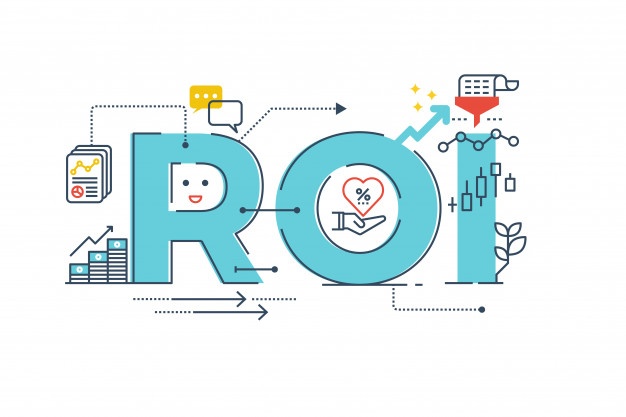Every real estate investor knows the importance of the return on investment (ROI) – that popular real estate investment metric used to estimate and evaluate the performance of an investment or to compare the performance of a number of different investments.
Rental real estate properties are a great way to make money and build wealth. As a landlord, it’s important for you to know how to calculate the rate of return on a rental property to determine its efficacy as an investment.
However, it can be challenging to figure out the right ROI calculation, as ROI calculations can be easily manipulated. In addition, real estate investors have the option of paying cash or taking out a mortgage on the property; therefore, certain variables can be either included or excluded when making the calculation.
Rate of Return on a Rental Property Calculation: Simple Formula
By now, real estate investors should know the simple rate of return formula, which is:
ROI = (Gain from Investment – Cost of Investment)/Cost of Investment
So, say you invested Kes 50,000,000 in the investment property, and the total profits you made from your investment sum up to Kes 70,000,000. In this example, the rate of return on your investment is:
ROI = (Kes 70,000,000 – Kes 50,000,000)/Kes 50,000,000 = 0.4 = 40%
Keep in mind that this is the simple rate of return on investment formula, and as you can tell, it is very general and includes a lot of estimates and unproven numbers.
Complications in Calculating ROI
When you buy property, the financing terms can greatly impact the overall cost of the investment. Complications in calculating ROI can occur when the property is refinanced or a second mortgage is taken out. Interest on a second, or refinanced loan may increase, and loan fees may be charged—both of which can reduce the ROI.
There may also be an increase in maintenance costs, property taxes, and utility rates. If the owner of a residential rental or commercial property pays these expenses, all these new numbers need to be plugged in to update the ROI.
Complex calculations may also be required for property bought with an adjustable-rate mortgage (ARM)—a loan with a rate that changes periodically through the duration of the loan.
Let’s look at the two primary methods to calculate ROI: the cost method and the out-of-pocket method.
The Cost Method
The cost method calculates ROI by dividing the equity in a property by that property’s costs.
As an example, assume a property was bought for Kes 10,000,000. After repairs and rehab, which costs investors an additional Kes 5,000,000, the property is then valued at Kes 20,000,000, making the investors’ equity position in the property Kes 5,000,000 (20,000,000 – [10,000,000 + 5,000,000]).
To use the cost method, divide the equity position by all the costs related to the purchase, repairs, and rehab of the property.
ROI, in this instance, is Kes 5,000,000 ÷ Kes 15,000,000 = 0.33, or 33%.
The Out-of-Pocket Method
The out-of-pocket method is preferred by real estate investors because of higher ROI results. Using the numbers from the example above, assume the same property was bought for the same price, but this time the purchase was financed with a loan and a down payment of Kes 2,000,000.
The out-of-pocket expense is therefore only Kes 2,000,000, plus Kes 5,000,000 for repairs and rehab, for a total out-of-pocket expense of Kes 7,000,000. With the value of the property at Kes 20,000,000, the equity position is Kes 13,000,000.
The ROI in this case is Kes 13,000,000 ÷ Kes 20,000,000 = 0.65, or 65%. This is almost double the first example’s ROI. The difference, of course, is attributable to the loan: leverage as a means of increasing ROI.
What Is a Good ROI for Real Estate Investors?
What one investor considers a “good” ROI may be unacceptable to another. A good ROI on real estate varies by risk tolerance—the more risk you’re willing to take, the higher ROI you’ll expect. Conversely, risk-averse investors may happily settle for lower ROIs in exchange for more certainty.
Of course, you don’t have to buy physical property to invest in real estate. Real estate investment trusts (REITs) trade like stocks on an exchange and provide diversification without the need to own and manage property. In general, REIT returns are more volatile than physical property (they trade on an exchange, after all).
ROI Doesn’t Equal Profit
Of course, before ROI can be realized in actual cash profits, the property must be sold. Often, a property will not sell at its market value. A real estate deal may close below the initial asking price, which reduces the final ROI calculation for that property.
Also, there are costs associated with selling a real estate property, such as funds expended for repairs, painting, and landscaping. The costs of advertising the property should also be added in, along with appraisal costs and the commission to the real estate agent or broker.
Both advertising and commission expenses may be negotiated with the service provider. Real estate developers with more than one property to advertise and sell are in a better position to negotiate favorable rates with media outlets and brokers. ROI on multiple sales, however, with varying costs for advertising, commission, financing, and construction present complex accounting issues that are best handled by a professional.
The Bottom Line
As a landlord, you should be familiar with how to measure the rate of return on a rental property. Depending on how you buy the rental property – either fully in cash or by putting a down payment and taking a mortgage – you can calculate the rate of return using the cap rate calculation or the cash on cash return calculation.
See Also: Net Rental Yield Calculation for Real Estate Investors














